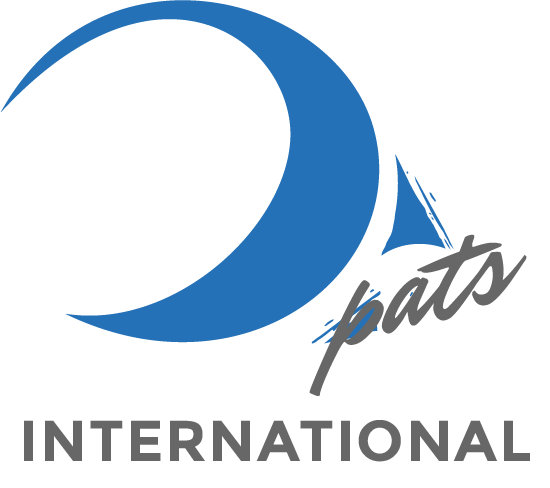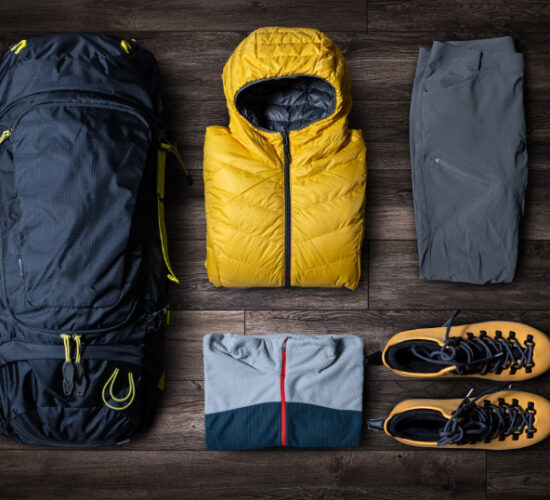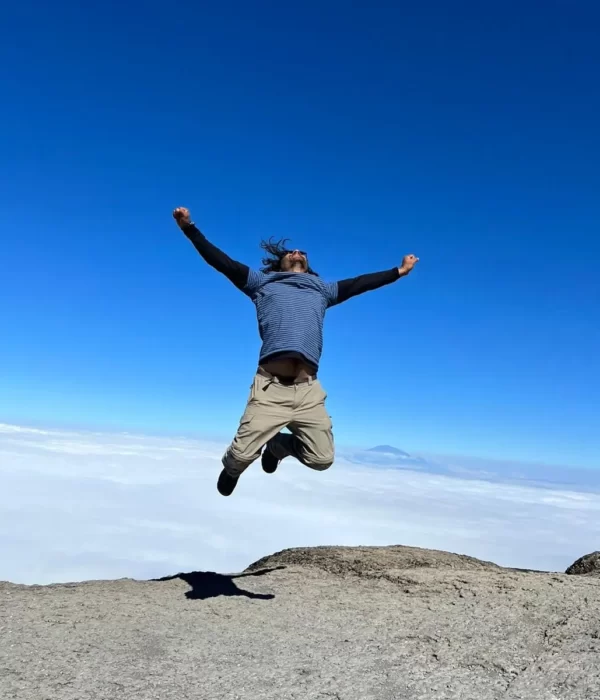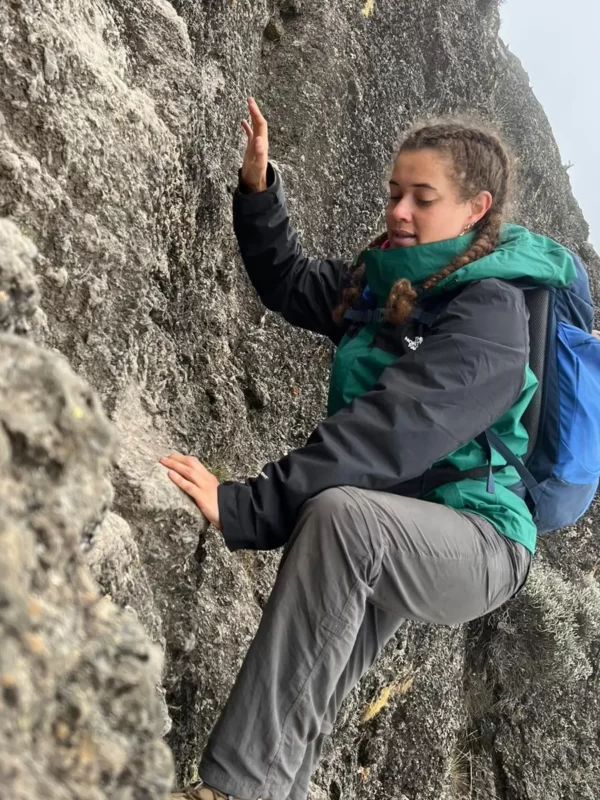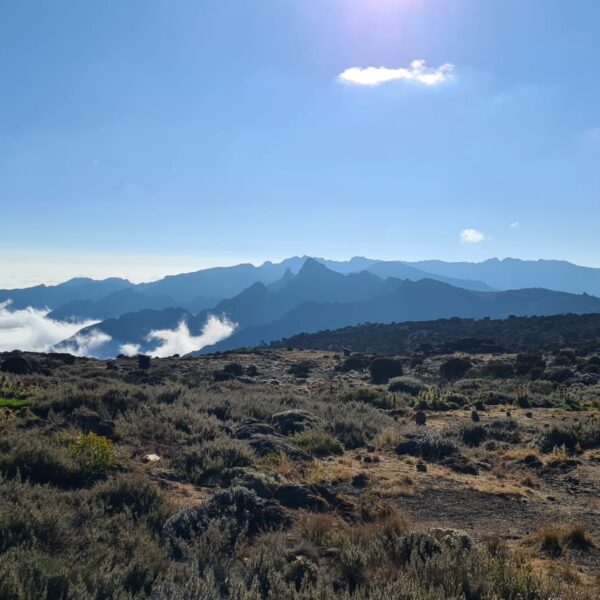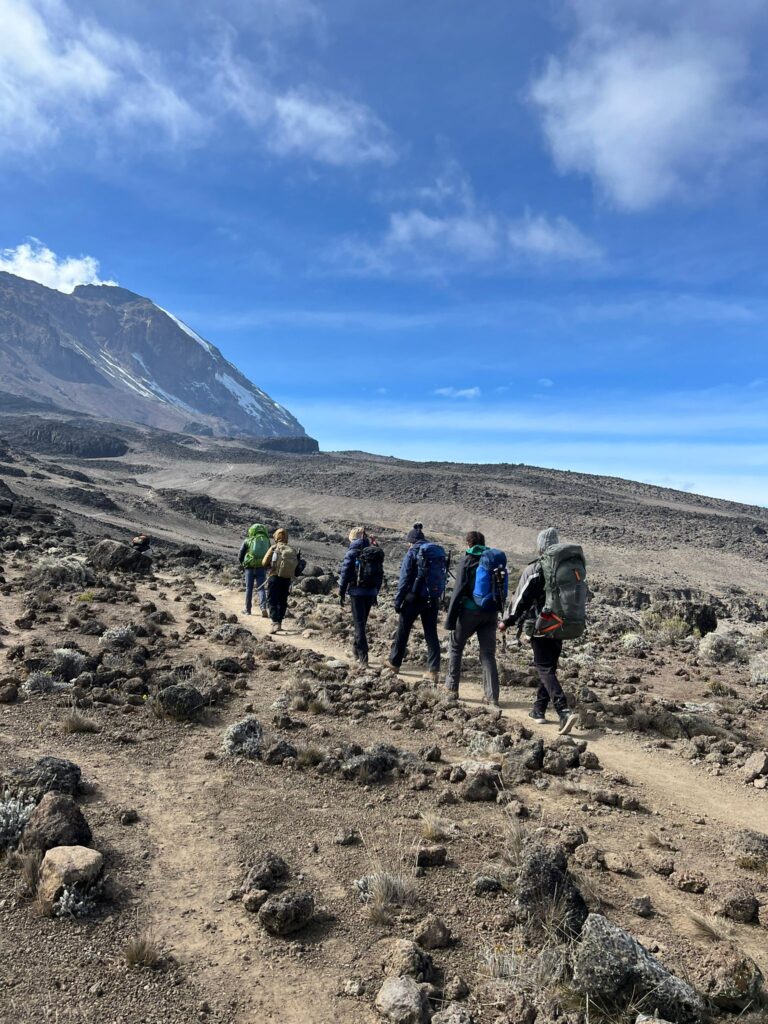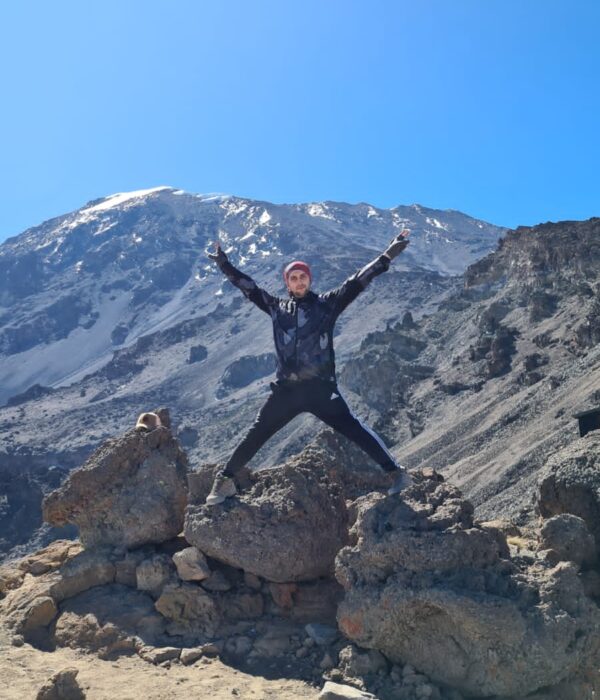Kilimanjaro National Park is home to the tallest mountain in Africa and the highest free standing mountain in the world. Named after its region, Mount Kilimanjaro stands at a height of 5,895m (19,341ft) and sits in splendid isolation above the surrounding plains as its snowy peak looms over the savannah. (1) The mountain is considered one of the Seven Natural Wonders of Africa and is a result of millions of years of volcanic eruptions from its 3 main volcanic peaks (Kibo, Mawenzi and Shira) which are encircled by a large mountain forest belt that harbor small endangered species such as the Abbot’s starling. Although Shira and Mawenzi volcanic cones are extinct, Kibo lies dormant and could still erupt at any time. (2) From the lowest to the highest point of the mountain, hikers will experience 5 distinct ecological climactic zones as they push toward the summit at Uhuru Peak. These include: montane forest, heath, moorland, alpine desert and arctic zones. (3)
Table Of Contents
What Is Kilimanjaro National Park?
Kilimanjaro National Park is a Tanzanian national park established in 1973 and is located 300 kilometres (190 mi) south of the equator, in the Kilimanjaro Region. Initially it was declared a forest reserve by a German colonial government in 1921 but it is now managed by the Tanzania National Parks Authority (TANAPA). The park includes Mount Kilimanjaro’s Volcanic massif above the tree line and the surrounding montane forest belt above 1,820 metres (5,970 ft), which covers an area of 1,688 square kilometres (652 sq mi). The United Nations Educational, Scientific & Cultural Organization (UNESCO) declared the park a world heritage site in 1987, right before it was expanded to include the entire montane forest in 2005, which had been part of the Kilimanjaro Forest Reserve (KFR). (4)
KINAPA (Kilimanjaro National Park Authority), a subject body of TANAPA, maintains and protects the mountain and its surrounding plains to ensure that this natural wonder is left to its pristine and majestic nature for future generations. Many risks such as adjacent land uses, downstream effects of air and water pollution, invasive species, fire and climate change pose a threat to the park’s environment. This is why in addition to an effective managing organization, Kilimanjaro National Park Authority:
- Appoints sufficient and well equipped ranger presence in order to carry out surveillance around the park;
- Enforces an annual tourist capacity limit of 28,470 people in order to maintain the natural aesthetic quality of the property;
- Protects the area from neighboring national parks (Amboseli National Park, Arusha National Park and Tsavo National park) that encroach and impact wildlife migration;
- Maintains downstream effects of air and water pollution due to leaky sewage systems;
- Manages fires that affect the diverse ecosystem of the mountain; &
- Monitors glaciers’ vulnerability to global climate change.
All these threats to the national park require fully funded educational programmes, trained management teams with all involved partners and stakeholders, and of course essential tools and equipment needed to protect and sustain its visual and natural integrity. In order to do that, the park imposes hefty government levies upon tourists, residents and locals that wish to visit the area. (5)
1. What’s The Cost Of Mount Kilimanjaro National Park Fees?
| Kilimanjaro National Park fees (6) | Quantity | |
| Conservation Fees | $70 | Per Day |
| Camping Fees | $50 | Per Night |
| Hut Fees | $60 | Per Night |
| Crater Camping Fees | $100 | Per Night |
| Rescue Fees | $20 | Per Hiker |
| Guide and Porter Entrance Fees | $2 | Per Supporting Crew |
| Forest Entry Fees | $10 | Per Hiker |
| Forest Vehicle Entry Fees | $20 | Per Vehicle |
| Forest Support Crew Entry Fees | $1 | Per Supporting Crew |
| Tourism Value Added Tax (VAT) | 18% | N/A |
| Retail Value Added Tax (VAT) | 18% | N/A |
| Mount Kilimanjaro Climbing Costs | Kilimanjaro National Park fees | Number Of Hiking Days |
| Marangu Trekking Costs | $866.08 | 5 Days |
| Marangu Trekking Costs | $1,047.09 | 6 Days |
| Umbwe Trekking Costs | $1,027.60 | 6 Days |
| Rongai Trekking Costs | $1,194.68 | 7 Days |
| Machame Trekking Costs | $1,144.56 | 7 Days |
| Lemosho Trekking Costs | $1,194.68 | 7 Days |
| Lemosho Trekking Costs | $1,361.77 | 8 Days |
| Northern Circuit Trekking Costs | $1,528.86 | 9 Days |
2. What Types Of Kilimanjaro National Park Safaris Are Offered In The Park?
Kilimanjaro National Park offers many activities, aside from mountain climbing, such as wildlife viewing, trekking safaris, cycling, camping and picnicking. Eventhough Mount Kilimanjaro is the park’s general attraction, travellers will be able to see other beautiful sights such as the Chala Crater Lake, Olpopongi, and the Shira Plateau, which technically sits on Mount Kilimanjaro, but should rather be considered a sight to be seen on its own. Popular activities to do in the park are:
Bird Watching Safaris
Kilimanjaro National Park is home to more than 150 bird species that include migratory birds from various parts of the world. (7) Bird lovers can find residents such as the local black-shouldered kite, long-tailed trogon, Gabar goshawk, blue-naped mouse birds, grey hornbill, African fish eagles, white-cheeked barbet, African pygmy kingfisher, red-capped robin chat, and white-necked raven among many other birds.
Hiking
Thousands of tourist, every year, visit Kilimanjaro National Park in order to hike Mount Kilimanjaro. With about 16,000 hikers that hike the mountain, only 60% are successful in reaching the summit at Uhuru Peak. (8) This is due to altitude sickness caused by poor acclimatization landscapes, short hiking durations and a failure to implement proper acclimation systems during expeditions.
Mount Kilimanjaro has 6 established hiking routes, 1 evacuation route and 1 descending trail. Of the 6 hiking trails, only 3 routes lead in success rates due to their great acclimatization opportunities and gradual landscapes. This has resulted in the mountain’s popularity among first time hikers above 3,000m in elevation. Hikers should expect expeditions to last 5-9 days.
Gamedrives
Within the region, especially on the rich lower slopes, travellers can spot Kilimanjaro national park’s animals such as elephants, cape buffaloes, black rhinos, giraffes, leopards, servals, hyenas, baboons, monkeys, antelopes, aardvarks, mongooses, porcupines, honey badgers, tree hyraxes and bush babies. However, for a proper Tanzania safari, other big national parks are far suitable for spotting giant African mammals like the Big Five. These are commonly present at Ngorongoro Conservation Area or Serengeti National Park.
Trekking Safaris
Kilimanjaro National Park offers trekking wildlife safaris, guided by a resident park ranger. These trekking excusions are often led on the lower slopes of the mountain and last 3-4 hours. Trekkers joining the excursion may spot black and white monkeys, colobus monkeys, olive baboons, butterfly species, insects, and various bird species.
Mountain Bike Safaris
Kilimanjaro mountain bike expeditions start at a nearby village, typically Chagga people’s farmlands, and push toward the summit via Kilema trail. This route up the mountain is only reserved for mountain bike excusions. (9)
3. When Is The Best Time To Visit Kilimanjaro National Park?
June to October and December to February are the best seasons to visit Kilimanjaro National Park because these months fall within the dry period of the year. The warmest months are in August and September, although humidity typically stays relatively high throughout the year. Due to the Mountain’s diverse climactic zones, it’s difficult to classify Kilimanjaro National Park to a singular ecological climate, but expect annual temperatures to range anywhere between 21-27 degrees Celcius (70 to 80 degrees Fahrenheit). (10)
4. Where Can You Stay At Kilimanjaro National Park?
Accommodations at Kilimanjaro National Park can be categorized into two groups:
Accommondations During Mount Kilimanjaro Hikes — Accommodations during Kilimanjaro hikes are mostly camping accommodations on all routes except for the Marangu trail. The Marangu route on Kilimanjaro is the oldest route on the mountain and, therefore has huts established by the national park. On this trail, climbers will find three huts: Mandara, Horombo, and Kibo. These huts have a budget feel and are convenient accommodation options during the rainy seasons. Otherwise, expect tented lodging throughout the mountain.
Accommodations During Wildlife Safaris — In the first rank of Tier 1, a premier, luxury lodging in all respects is Shu’mata Camp, set in an isolated and exclusive dream setting on a hilltop below Kilimanjaro, with spectacular views of the summit in early morning and evening when not shrouded by cloud.
In the second rank of Tier 2, deluxe accommodation is available at Ndarakwai Ranch on the valley floor, where a greater number of guests are housed in 15 self-contained lodge like tented rooms with a lesser personalized timetable and level of service due to the triple amount of guests rooms. However guests will still be able to find amazing comfort, views and opportunities to study the wildlife and the surrounding communities. (11)
On the third, more budget-conscious level, lies Kambi Ya Tembo which offers unrestricted local exploration and access to western Kilimanjaro as well as day treks to the mountain.
5. Where is Kilimanjaro National Park Located?
Kilimanjaro National Park is located in the northern region of Kilimanjaro, Tanzania. The park sits roughly 300 kilometres (190 mi) south of the equator and about 100 miles (160 kilometers) east of the East African Rift System. (12) The Kilimanjaro National Park is easily accessible by air or by road. Travellers should simply fly into Kilimanjaro International Airport and drive to the park by either Taxi or a private car service. Airlines available to Kilimanjaro International Airport (JRO) are KLM, Qatar Airways, Ethiopian Airlines, Kenya Airways, Rwanda Air, Turkish Airlines and Precision Air.
To start the hike, compare the Lemosho vs Machame route and travel to one of their gates for registration. These are the best performing routes on Kilimanjaro and you’re likely to have a much easier hiking experience than other routes on the mountain. Furthermore, these trails are the reason Kilimanjaro vs Everest Base Camp‘s performance is hard to differentiate, for many first time hikers above 3,000m (10,000ft). However unlike Lemosho and Machame trails, the Marangu route on Kilimanjaro is easily accessible but offers poor acclimatization opportunities. You’ll also not get a chance to experience special wildlife sightings, like blue monkeys on Kilimanjaro, when you hike the Marangu route. More importantly, whichever route you choose, avoid the Western Breach route on Kilimanjaro, as an ascent path, because it’s well known to have a number of deaths, due to random rockfalls. For this trip, you’ll definitely need to have technical climbing experience and know how to prepare for Kilimanjaro‘s harsh terrain in order to get past this technical path to the summit.
